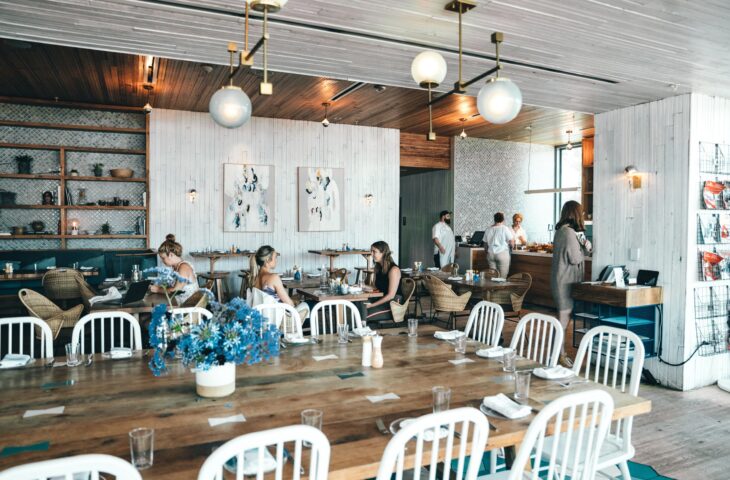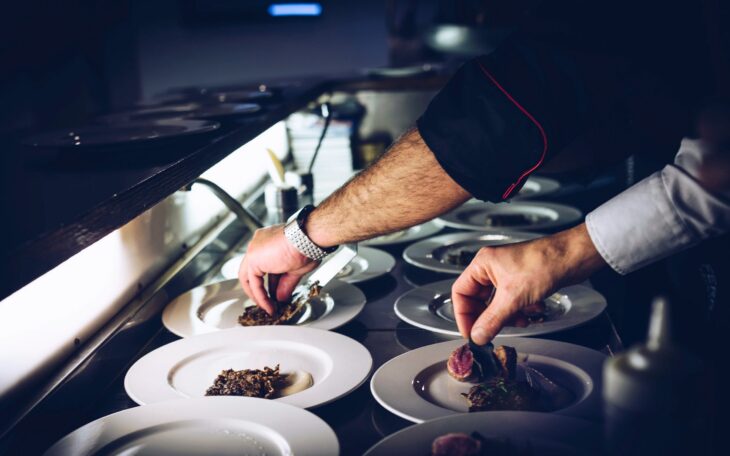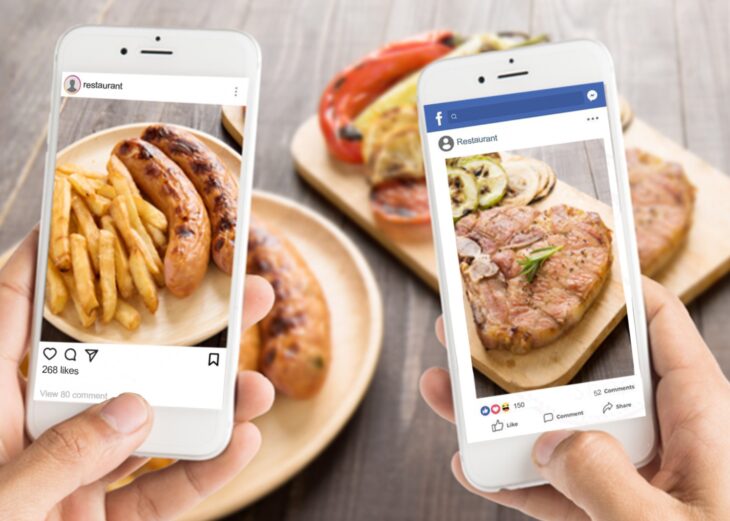Restaurants, no matter how successful, need to operate on thin profit margins, making it new is extremely precarious financial investments.
Many businesses have large amounts of overhead, from marketing costs to basic upkeep and electricity, and restaurants need to worry about not only built-in expenses but also finding versatile talent for front- and back-of-house that will keep its offerings fresh and exciting. You can check this article for more information.
Both traditional and social media marketing can help a restaurant get the attention it deserves, but there are many pitfalls that need to be avoided. We’ll walk you through the major dos and don’ts of restaurant branding, and we’ll even share some advice from one of the industry’s leading Creative Directors.
Contents
What visitors are looking for

Source: unsplash.com
Before deciding on how to brand a specific cafe, you’ll have to understand what exactly visitors are looking for in their dining experience. For all restaurant, there are certain commonalities here. Anyone coming to a restaurant, regardless of its type, wants to have a nice, satisfying meal and socialize with the people accompanying them.
But beyond that, why do people want to come to your place?
There are a few different ways to answer that question.
The first is to be very honest with yourself about what you offer to the public. What is special about the cuisine and the atmosphere?
Another method is to request direct feedback or check online reviews. This way, you’ll find plenty of information on what people like most about the restaurant and what they wish had been part of the dining experience.
You can also look to trends within your offering’s category. For fine dining establishments, a renowned international hospitality and restaurant Creative Director and branding guru Eva Nineuil feels that there are a few key reasons people come through the door or reach out to make a reservation.
“People like to be surprised by the décor, the ambiance, the menu, the flavors they will discover, and the recommendations of the staff. But they also want to put themselves in a situation where they will simply enjoy the moment. You go out for dinner to have a nice time.”
Do you offer a level of surprise? Will that sense of surprise get in the way of guests enjoying themselves?
You can already see how these considerations can be a lot to handle. Each restaurant needs to strike a balance that will result in compelling dining experiences.
Meaning what you say

Source: Medium
Once you have a better idea of what your diners are looking for, it’s time to reassess the cafe’s branding. Do you offer what people are looking for? Does your brand presence reflect those offerings? Or, on the other hand, are there things you would like to offer but still need to implement? In the case of the latter, there may be a temptation to change the branding first, claiming that, yes, your restaurant can offer XYZ to visitors, intent to make those changes later on.
But jumping the gun like this can cause serious problems for your brand. If visitors get the sense that you’re being dishonest or inauthentic just to chase trends, those visitors won’t trust your brand. If you want to say that you offer local farm-fresh produce and meats, then your produce and meats need to be sourced from local farms, no excuses. If you want to claim that your staff is friendly and helpful, then you need to make it clear to every member of your staff that these standards must be maintained. If you want your place to be known for its carefully curated atmosphere, then you need to take time to carefully construct that atmosphere through decor, lighting, and even the choice of music. In fact, the right choice of music can greatly enhance the overall ambiance. Consider using a service like rssts.com/streaming-music to discover and stream music that perfectly complements the mood you want to create.
Being genuine isn’t just a savvy PR strategy, it’s also just a great way to run a business. Maintaining trust with your past, present, and future guests is extremely important. There may be times when it’s tempting to lean into a recent trend, but if your restaurant can’t deliver on that promise, then this disparity may cause more problems than it’s worth.
An industry of people

Source: unsplash.com
One very important aspect of hospitality that Nineuil highlighted is its focus on people.
“The restaurant industry is an industry of people. Behind every aspect of the experience that is delivered to the final customer, there are people. That farmer who grows these special tomatoes, that craftsman who makes these ceramic plates, that designer who built the elegant furniture, etc. This is a very human-oriented sector.”
This is just the reality of hospitality today, but in reference to branding, highlighting this aspect can be extremely useful.
Service must adhere to your brand, but there are many opportunities to draw attention to the ways in which individuals contribute to your business. Waitstaff could let their individual personalities shine through, while still meeting required standards, of course. An open-kitchen floor plan could further emphasize just how many people are working hard to create memorable meals. Best of all, bringing the human element to the forefront doesn’t require major changes to your current service model. It’s really about shining a light on what’s already there. Research has shown that customers don’t want to feel like employees are just nameless workers hidden behind a brand. Customers want to form a connection with businesses and maybe even become regulars.
When it’s time to update a public image

Source: Thrillax
Let’s say that you’ve been paying careful attention to your branding for a while but you’re still not getting the results you want.
Traffic is steady or falling and you don’t know what your next move should be.
In times like this, you may need to consider making larger changes to the way you operate, and while some of these changes can be costly, they could give the restaurant the boost it needs to start attracting more visitors. The last thing any restaurateur wants is for their establishment to blend into the background. It’s all too easy to get lost in the shuffle of the dozens or even hundreds of cafes that open each year.
Changing the public image of a restaurant is a two-step process. The first step involves implementing actual changes, which we’ve discussed in previous segments. In summary: be genuine about the changes you’re making and do what feels right for your restaurant’s unique sensibility.
The second step is all about communicating these changes to the outside world, and while this doesn’t absolutely require marketing efforts, using some type of marketing is highly recommended. Yes, it’s possible for old-fashioned word-of-mouth to do the work for you. Given enough time, satisfied guests will tell friends about their positive experiences at your place.
But very few people can afford to wait patiently for public opinion to change, and this is where active marketing efforts come into play. Focus on local efforts. Consider sponsoring community events. Think hard about who your audience is and find ways to market to them directly. But of course, the ultimate low-cost marketing available option is social media. Let’s talk about how to use social media to your advantage.
Social media presence

Source: Amrut Services
Whether you like the idea or not, it’s advisable to create a social media presence for your restaurant. This can be an especially important strategic move for small restaurants that may not have large marketing budgets. Creating social media pages like Facebook Page or Instagram is free in most cases, and it will provide the perfect opportunity to attract the attention of new customers while also regaining the attention of previous customers. Social media has also had a widespread impact on how certain cafes are viewed. As Nineuil explained, the fine dining space, in particular, has benefitted from the accessibility that social media offers. Restaurants can take advantage of this shift by sharing aspects of the operation that guests wouldn’t usually see. The result? Social media users start to feel like insiders and they become more invested in your place specifically.
“Fine dining was once reserved to an elite group, but social media has democratized its image. Also, restaurants have unlimited opportunities to be creative in social media by posting ‘behind the scene’ content. People love seeing what happens in the cuisine of a restaurant.”
Fifteen years ago, letting potential customers see what happens behind the scenes at your restaurant would have seemed like a mistake, but as we discussed earlier, humanizing your space and staff helps to generate positive attention. Rather than cultivating mystique, restaurants, especially high-end, can now achieve a brand image that emphasizes community, accessibility, and originality. In fact, we could say that social media has helped create this current age of increased accessibility among foods and other businesses.
Don’t miss out on your chance to use social media as a way to transmit your brand identity to a very wide audience.
